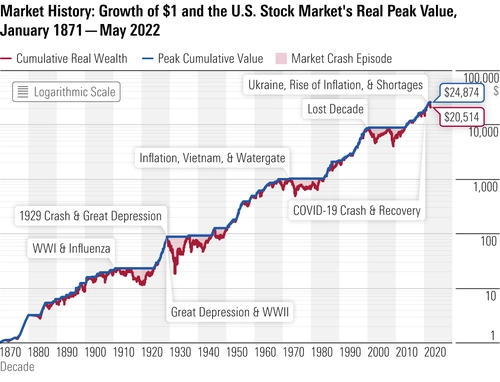
Norway is making an efficient and rational use of its fossil fuels to help with its energy transition. It's a model that Canada would do well to emulate, according to a recent study by National Bank Financial Markets.
Here are some numbers around Norway’s fossil fuel production:
- Norway is the world's seventh largest producer of natural gas, supplying 3% of global demand.
- It covers around 2% of global oil demand through its 2 million barrels per day oil output.
- It obtains around 95% of its electricity from hydroelectric sources.
Since the outbreak of war in Ukraine, Norway has supplanted Russia as Europe's main source of gas, supplying a third of its needs.
Norway Is Using Oil and Gas Revenues to Fund Green Energy
In 2022, “Norway will have earned around US$161 billion (or about 33% of its GDP) from oil and gas production, an increase of 150% compared to 2021,” the National Bank report authors Angelo Katsoras and Baltej Sidhu. In addition, Norway's sovereign wealth fund, built up over the years from oil and gas revenues, now worth US$1.3 trillion, is used to finance 20% of the Norwegian state budget. With these revenues, the Norwegian government can “massively finance its transition to green energy”, say the authors of the study.
By 2022, for example, it was subsidizing electric vehicle purchases to the tune of US$25,000 per vehicle. This makes Norway a leader in the introduction of electric vehicles: 20% of the vehicle fleet and 80% of new vehicles sold were electric in 2022. (Note that from this year, Norway will reduce its support, applying the 25% VAT exemption only to the first US$47,000 of the purchase price of an electric vehicle).
“The Norwegian model has worked very well for decades largely because politicians have chosen to take a longer-term view of its oil investments/tax revenue versus fixing budget crises in the near term, and there is a high degree of trust by the Norwegian society that the funds will not be mismanaged, states Morningstar Energy strategist Stephen Ellis. It would certainly be a more thoughtful model for the Canadian government to adopt.”
In Terms of Fossil Fuel Production, Norway Is a Close Relative to Canada
Norway’s fossil fuel production numbers make it a close relative of Canada, the world's 4th-largest oil producer with 4.6 million barrels a day, as well as its 4th-largest natural gas producer and 6th-largest exporter. Hydroelectricity meets 61% of the country's electricity demand, but when clean energies (nuclear, 12%, and wind, 6%) are included, Canada's share of “green” energy rises to 79%.
In Canada, federal government tax incentives for the purchase of an electric vehicle do not exceed $5,000 for a vehicle costing less than $55,000, while provincial incentives range from $4,000 in British Columbia to $7,000 in Quebec.
What Can Canada Learn from Norway?
The authors of the NBFM study feel that “the Canadian government should follow Norway's lead and make it a priority to support oil and gas production using the highest environmental standards to finance the decades-long transition to green energy.”
However, such a turnaround is far from obvious, Ellis warns. The Norwegian model “makes long-term sense, he claims, but it comes with a price both from the political and societal perspective and thus makes it very difficult to implement and maintain over the long run if you don't have the same pre-conditions in place. It would require a major shift in thinking by the Canadian government, in my view, so it remains rather unlikely.”
The National Bank report authors argue that the country’s environmental footprint is low, “due to the geographical location of its reserves, its relatively modern and efficient facilities, and the sharp drop in its methane emissions.” The study adds that “if Canada ceased oil sands production altogether, its emissions would fall by around 13%. But, in the context of global emissions, this change would not even amount to a rounding error.”
Canada could promote its exports to help reduce more polluting energy production elsewhere. “Canada's most significant contribution to reducing global emissions, the BNC report continues, would be to help emerging countries make the transition to cleaner energy, particularly by offering alternatives to coal.”
What Can Canada Do?
A recent Royal Bank report warns that Canada could pay the price of relying exclusively on solar and wind power to "green" its electricity grid. “Natural gas is unavoidable in the energy mix in the short and medium term,” writes the report. By 2026, Ontario, the country's economic heartland, will be suffering from energy deficits, which a supply of solar and wind power will only exacerbate.
To stabilize electricity supply, Canada has no choice but to rely on natural gas in the medium term, and nuclear and hydro-electric power in the long term. The report authors offer four main options to address the integration of intermittent power sources in the long run.
- Swapping power between provinces that have good wind and solar resources and those with a lot of hydro.
- Fit gas plants with carbon capture, utilization and storage (CCUS) units.
- Storing the ample energy produced by renewables, either charging batteries while they produce more than needed, or using the excess power to pump water into reservoirs and releasing it through turbines later is a viable option.
- Using a mix of Hydro and Nuclear power.




















